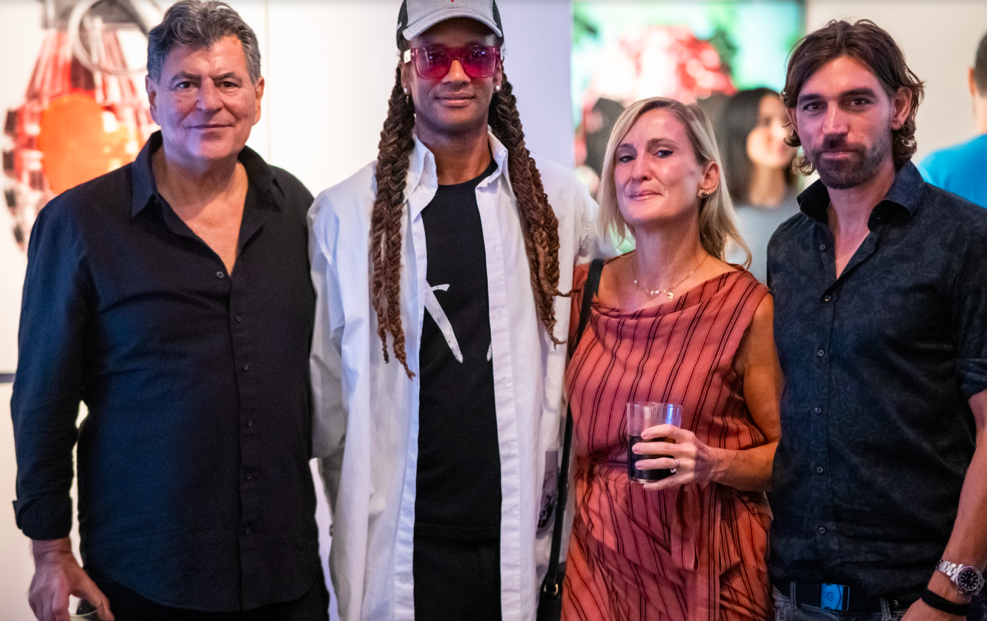Inside the American Federation of Arts’ Ambitious 2025–2027 Exhibition Tour: CEO Pauline Forlenza on Expanding Access to Iconic Art.
In an exclusive interview with Culturalee, American Federation of Arts (AFA) CEO Pauline Forlenza unveils a bold new chapter for the organization: a groundbreaking 2025–2027 touring exhibition season that will travel to more than eleven U.S. cities.
Featuring masterpieces by Rembrandt, Georgia O’Keeffe, and Sarah Sze, alongside dynamic showcases of women abstract artists, legendary photographers, and contemporary innovators, the AFA’s new program reaffirms its century-long commitment to making world-class art accessible nationwide—especially in communities often bypassed by major exhibitions.

The American Federation of Arts was founded way back in 1909. How has it been so successful in keeping up to date with art world trends and the globalisation of the art world?
The AFA has endured because we have never thought of ourselves as separate from the communities we serve. Since our founding, we have shaped the museum landscape: launching landmark exhibitions, advancing policies that expanded access, and introducing ideas that redefined what a touring program could be. Our work has linked museums large and small, urban and regional, local and international, and those connections have allowed us not only to stay current but to lead the dialogue as the art world has grown more global. As new practices and perspectives emerge, our network of member museums and partners ensures that we remain at the forefront, fostering opportunities and broadening conversations. The AFA has always understood that to make art accessible is not just to move objects from one place to another, but to stay attuned to the conversations shaping culture. Our longevity is proof of the strength of a community built over more than a century, one that continues to collaborate, adapt, and lead with the power of art to strengthen relationships and deepen connections across borders and generations.

Your new season of nationally touring exhibitions for fall 2025 through 2027 is really eclectic, ranging from historical 17th Century paintings from Rembrandt’s Amsterdam through to Georgia O’Keeffe’s 1920s flower paintings and contemporary artist Sarah Sze’s abstract paintings. How many curators compile the exhibition program, and how do you include such a wide range of styles and genres?
Rather than a single voice, the AFA thrives on multiplicity. We work closely with an extraordinary group of staff curators as well as guest curators, scholars, and artists from around the world, each bringing a different lens to the program. One season might pair Dutch Golden Age civic ideals with O’Keeffe’s modernist experimentation and Sarah Sze’s meditations on time and abstraction. What unites them is not style but the urgency of their ideas. In addition to our fantastic AFA team, our guest curatorial partners are drawn from universities, museums, and independent practice, and together they create a program that reflects the breadth of human creativity. That diversity is essential. It mirrors the way our member museums engage with their audiences: not through one narrative, but through many overlapping ones that illuminate different histories, perspectives, and possibilities.
The AFA touring exhibitions will visit museums in over 11 cities around the United States. How important do you think it is to tour these exhibitions to cities that may not otherwise have access to such important artworks from around the world, and what cities will be included?
It is essential. Art should not be the privilege of a few major metropolitan centers. When an exhibition travels to Wichita or Sarasota, Memphis or Davenport, it transforms the cultural life of those communities. A family encountering a Rembrandt for the first time in Charleston, or students in Tulsa standing before Georgia O’Keeffe’s early canvases, are part of the same story as visitors in New York or Los Angeles. Touring exhibitions embody our belief that museums are at their strongest when they act collectively. In the coming season, our shows will visit cities including Roanoke, Virginia; Louisville, Kentucky; Kalamazoo, Michigan; and Mobile, Alabama. Each city brings its own audience, its own history, and its own voice to the conversation. The AFA has always operated on both a national and international stage, circulating exhibitions across the country and collaborating abroad. By connecting local audiences to both national and international networks, the AFA ensures that the dialogue around art remains expansive and resonant wherever it travels.

© ELAINE DE KOONING TRUST. COURTESY OF THE LEVETT COLLECTION AND FAMM. PHOTO: FRASER MARR.
Art should not be the privilege of a few major metropolitan centers. When an exhibition travels to Wichita or Sarasota, Memphis or Davenport, it transforms the cultural life of those communities. A family encountering a Rembrandt for the first time in Charleston, or students in Tulsa standing before Georgia O’Keeffe’s early canvases, are part of the same story as visitors in New York or Los Angeles. Touring exhibitions embody our belief that museums are at their strongest when they act collectively.” Pauline Forlenza, American Federation of Arts CEO



